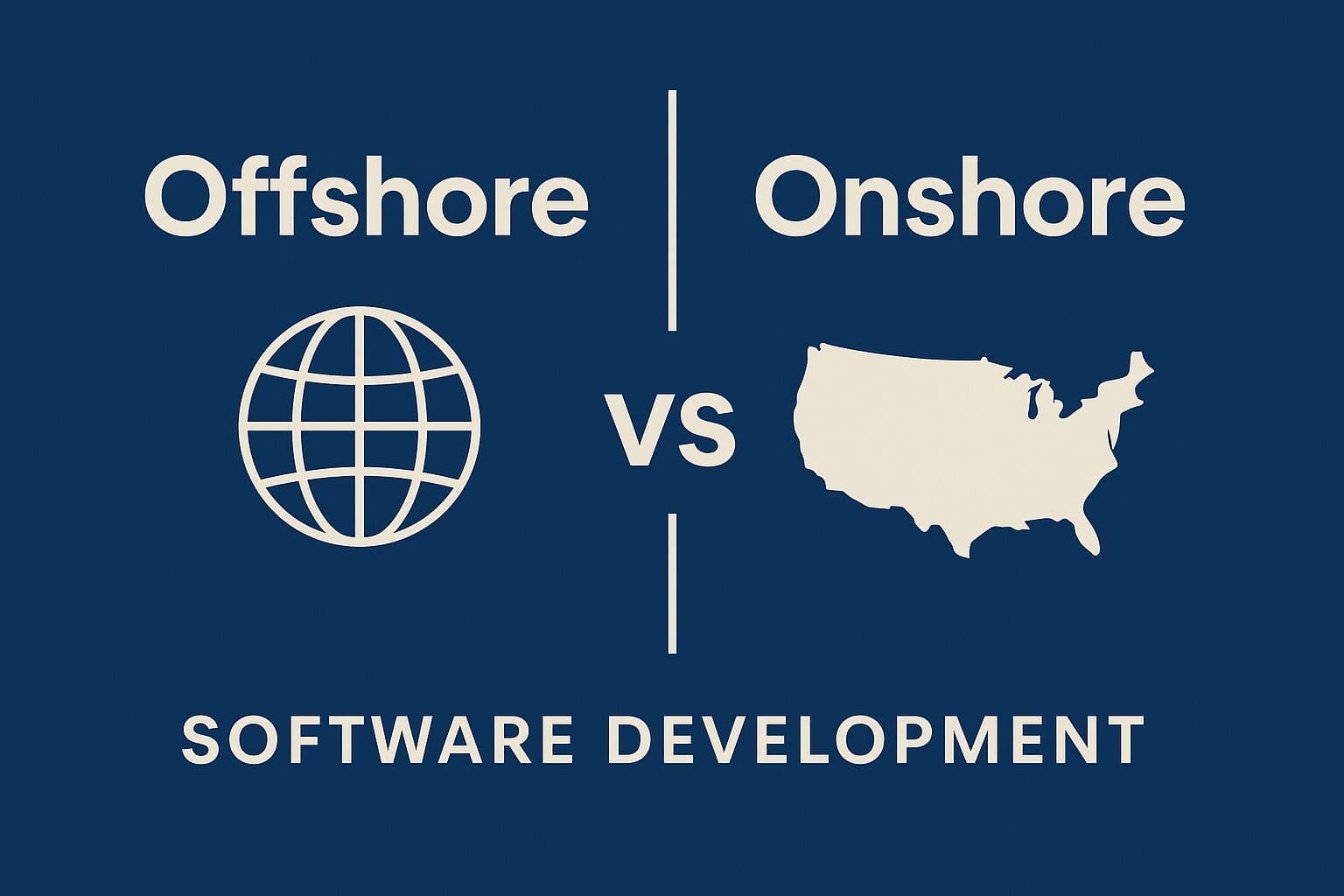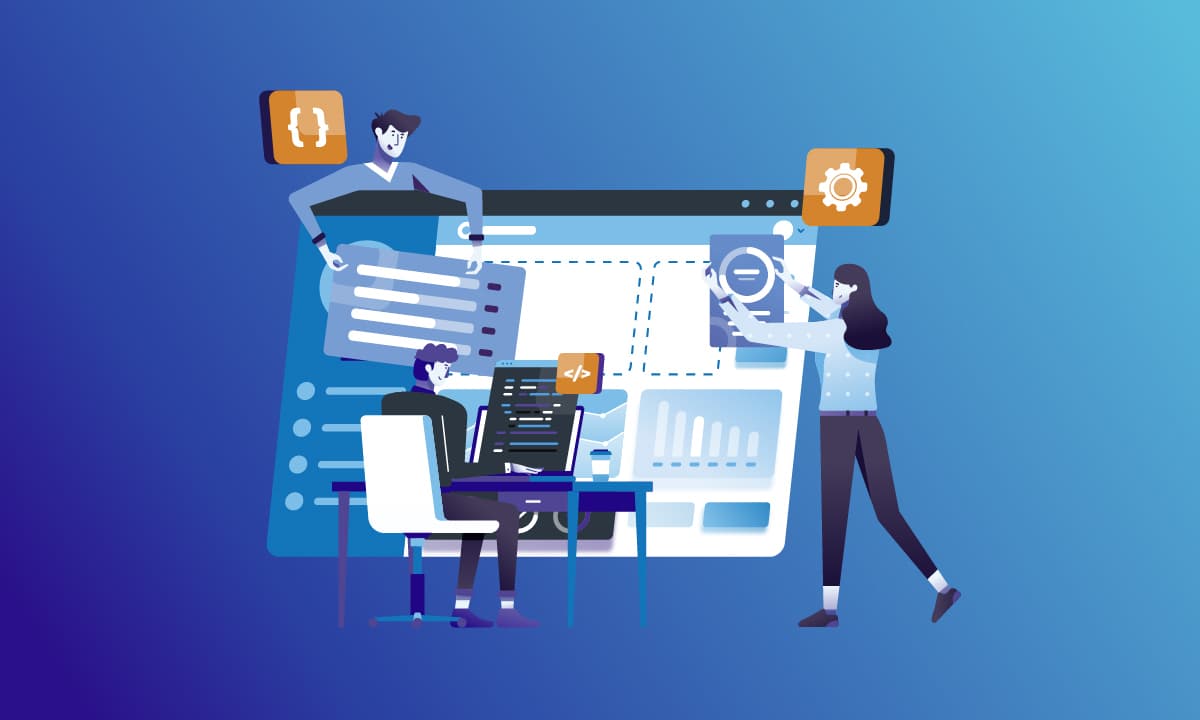Project Management
By: Bryan Reynolds | 25 June, 2025

This comprehensive article explores the complex and often daunting challenges organizations face when trying to scale legacy software systems. It dissects the architectural, data, technical debt, operational, and human capital issues that create significant roadblocks to scalability, while also highlighting the severe business ramifications of inaction, including financial losses, reduced agility, and heightened risk. Drawing from strategic frameworks, modernization taxonomies, and case studies like Lufthansa Technik and Python-based system upgrades, it provides actionable recommendations for transforming these outdated systems into scalable, future-ready platforms. The piece emphasizes that modernization is not a one-time fix, but a continuous journey requiring careful planning, cultural change, and investment in both technology and people.
Read MoreBy: Bryan Reynolds | 24 June, 2025

This comprehensive article tackles the widespread business issue of inconsistent and duplicated customer data, examining its root causes, financial and operational consequences, and strategic remediation tactics. It outlines a three-phase resolution framework: initial assessment, intensive data cleansing, and long-term preventative practices including master data management, data governance, stewardship, and enabling technology. With practical guidance, actionable steps, and visual tables, the piece serves as a detailed roadmap for transforming flawed data environments into trustworthy, streamlined, and strategic data ecosystems.
Read MoreBy: Bryan Reynolds | 23 June, 2025

System integration is a complex yet critical undertaking for modern enterprises striving for efficiency, agility, and innovation. This in-depth report explores the multifaceted challenges of integrating disparate systems—from technical and data-related obstacles to organizational and security pitfalls—and highlights the pivotal role of a skilled and well-managed software team in overcoming them. It details architectural approaches, common integration drivers, and real-world case studies to illustrate the consequences of inadequate team performance, while offering actionable recommendations to build, manage, and empower high-performing teams that can turn integration into a strategic asset.
Read MoreBy: Bryan Reynolds | 20 June, 2025

This comprehensive guide explores the pervasive challenges and high costs associated with inefficient data entry processes and outlines a strategic framework for organizations to optimize them. By identifying root causes, standardizing workflows, leveraging automation technologies like OCR, RPA, and AI, and empowering employees through training and ergonomic design, businesses can dramatically improve data accuracy, reduce operational costs, and enhance decision-making. The article emphasizes the importance of a coordinated, phased approach and continuous performance monitoring to transform data entry from a liability into a strategic advantage.
Read MoreBy: Bryan Reynolds | 18 June, 2025

This comprehensive financial guide demystifies the full cost structure of mobile app development, offering a detailed analysis of every financial factor from upfront design and platform choices to long-term maintenance, scalability, and team dynamics. It explores how app complexity, backend infrastructure, development models, UI/UX intricacy, and security requirements influence costs, and provides comparative pricing ranges for different app types, platforms, and geographies. Importantly, the article emphasizes a lifecycle approach to budgeting—underscoring that post-launch operations, marketing, and support often exceed the initial build cost. Strategic advice is offered to help businesses invest wisely, reduce project risk, and maximize return on investment.
Read MoreBy: Bryan Reynolds | 17 June, 2025

This comprehensive article explores the root causes of performance degradation in legacy software systems, offering a diagnostic framework that spans architecture, hardware, databases, technical debt, scalability, integrations, and maintenance. It emphasizes how these elements often interact synergistically, resulting in compounded inefficiencies that cannot be resolved with isolated fixes. The report helps business and technical stakeholders identify and understand systemic bottlenecks to guide decisions around optimization, modernization, or replacement, aiming to restore efficiency and extend system longevity.
Read MoreBy: Bryan Reynolds | 26 May, 2025

Replit is an AI-powered, cloud-based development platform designed to democratize software creation by offering an accessible, all-in-one coding environment that supports over 50 programming languages, real-time collaboration, seamless deployment, and integrated AI assistance. With tools like the Replit Agent for app generation and the Replit Assistant for in-editor support, the platform enables rapid prototyping and empowers both technical and non-technical users to build and deploy applications directly from a browser. While ideal for learners, educators, SMBs, and internal tool developers, its performance and flexibility may fall short for enterprise-grade, mission-critical workloads. Its hybrid pricing model combines free access, subscriptions, and usage-based billing, and it emphasizes security through GCP infrastructure and SOC 2 compliance.
Read MoreBy: Bryan Reynolds | 21 May, 2025

This comprehensive report examines the strategic decision between Commercial Off-the-Shelf (COTS) software and custom-built solutions, presenting a clear argument for the long-term advantages of custom software development. While COTS provides lower upfront costs and quick deployment, it often limits adaptability, scalability, and strategic differentiation. Custom software, by contrast, offers superior alignment with unique business needs, fosters innovation, enables deep system integration, supports long-term growth, and creates meaningful competitive advantages. Through detailed analysis, real-world case studies, and financial comparisons—including ROI and TCO—the report equips senior decision-makers with a robust framework to evaluate software investments in alignment with strategic goals.
Read MoreBy: Bryan Reynolds | 19 May, 2025

This comprehensive report outlines the warning signs that a software development partner may be hindering, rather than supporting, business growth—especially for mid-market B2B organizations in sectors like finance, healthcare, and technology. It details common operational pain points such as inefficiencies, outdated systems, poor scalability, and security risks, and identifies specific partner behaviors like communication breakdowns, reactive support, and lack of strategic alignment that indicate a misfit. The report also provides frameworks, KPIs, and personas-based diagnostics to help CTOs, CFOs, and other executives assess partner effectiveness. Ultimately, it argues that switching to a growth-focused partner like Baytech Consulting may be essential to overcoming these limitations and achieving long-term, scalable success.
Read MoreBy: Bryan Reynolds | 16 May, 2025

Business owners must strategically decide whether to refactor or rebuild their software systems, a choice with significant financial, operational, and competitive implications. Refactoring involves improving the internal structure of existing code to enhance maintainability and efficiency without altering core functionality, offering lower risk and cost but limited transformation. Rebuilding, on the other hand, entails creating a new system from scratch to overcome deep technical debt, adopt modern technologies, or align with major strategic shifts, offering long-term benefits but carrying higher risk and investment. This decision should be guided by a thorough assessment of technical debt, business strategy, financial constraints, team capabilities, risk tolerance, and opportunity costs—recognizing that the optimal path depends on each company’s unique context and goals.
Read MoreBy: Bryan Reynolds | 15 May, 2025

This article explores the critical dynamics behind building a successful Minimum Viable Product (MVP), highlighting why many MVPs fail due to an imbalance between speed and architecture. It outlines the strategic importance of validated learning, identifies common pitfalls in execution, and offers actionable frameworks to balance rapid market entry with a scalable technical foundation. Through case studies and practical recommendations, it guides startups in avoiding technical debt traps and over-engineering, helping them launch smarter and build products that truly meet user needs.
Read MoreBy: Bryan Reynolds | 14 May, 2025

Selecting the right software development partner—whether onshore or offshore—is a high-stakes decision with long-term business impact. This report provides a comprehensive guide for navigating the selection process, emphasizing the importance of strategic alignment, process maturity, communication, cultural fit, and intellectual property protection. While US-based firms offer closer collaboration and legal simplicity, offshore companies provide cost efficiency and broader talent access but require stronger oversight and risk management. By focusing on holistic evaluation, rigorous due diligence, and a multi-layered IP protection strategy, businesses can identify a partner that delivers not just code, but sustainable business value.
Read MoreBy: Bryan Reynolds | 09 May, 2025

Azure DevOps is a comprehensive, all-in-one DevOps platform by Microsoft that streamlines the entire software development lifecycle, from planning and coding to building, testing, and deploying. It offers integrated services like Azure Boards, Repos, Pipelines, Test Plans, and Artifacts, making it ideal for organizations seeking efficiency, quality, and continuous delivery. Compared to alternatives like GitHub, GitLab, Jira, Jenkins, and CircleCI, Azure DevOps excels in end-to-end traceability, deep Microsoft ecosystem integration, and robust project management, though it may lag behind in community size and cutting-edge open-source features.
Read MoreBy: Bryan Reynolds | 01 May, 2025

This report provides a comprehensive analysis of the trade-offs between offshore and onshore software development models. Offshore development offers notable cost savings, access to a global talent pool, and scalability, but introduces risks like communication barriers, quality control challenges, and security concerns that can lead to costly rework. Onshore development, while more expensive initially, provides superior communication, greater control, and better alignment with local market needs, minimizing long-term risks and maintenance costs. The report emphasizes that strategic decision-making should prioritize a thorough evaluation of total cost of ownership (TCO), project complexity, risk tolerance, and long-term quality outcomes rather than focusing solely on hourly rates. A balanced, holistic approach is critical to achieving successful, cost-effective software development.
Read MoreBy: Bryan Reynolds | 23 April, 2025

The blog explores v0.dev, Vercel's AI-powered UI generation tool, and how it transforms frontend development for businesses. It explains how v0.dev uses natural language prompts to produce production-ready React and Tailwind CSS code, helping teams rapidly prototype, streamline design-to-code workflows, and reduce engineering overhead. Key business benefits include faster MVP delivery, internal tool development without frontend expertise, UI consistency across products, and cost savings. The article also outlines pricing options and emphasizes v0.dev's potential as a strategic advantage in modern software development.
Read MoreBy: Bryan Reynolds | 18 July, 2024

Agile software development, born from iterative methods dating back to the 1950s, prioritizes collaboration and adaptability. It challenges traditional waterfall approaches, offering frameworks like Scrum and Kanban to enhance productivity and innovation across industries beyond software. Exploring the evolution, frameworks, benefits, and future trends of Agile methodologies, this article delves into its history, application across industries, and its transformative impact on software development and beyond.
Read MoreBy: Katarina Rudela | 08 September, 2022

Modern businesses frequently find they need new software to remain competitive, especially in crowded markets driven by rapidly advancing technology. The decision to implement software often comes down to a choice between custom and commercial-off-the-shelf software. Custom software has a higher up-front cost, but its maintenance costs are often lower since it probably won’t require as many changes going forward. Organizations making this decision must also consider the longer implementation time of custom software.
Read MoreBy: Katarina Rudela | 29 April, 2022

Continuous delivery is a software development practice that offers a wide range of benefits, from faster times to market to lower costs to higher quality products. However, continuous delivery is also a practice that entails a number of hurdles that must be overcome. To help you overcome these hurdles in order to enjoy the many benefits offered by the continuous delivery approach, we'll cover everything you need to know about continuous delivery, including what it is, how it works, and the important pros and cons to consider before you decide if continuous delivery is the right approach for your next software development project.
Read MoreBy: Katarina Rudela | 20 January, 2022

Modern software development is usually a complex process involving many team members with a variety of skill sets besides the ability to write code. This team’s structure is therefore a key component in a development project’s long-term success. There is no one-size-fits-all structure that works for all projects, but assembling an effective team usually involves more than simply finding a group of experienced developers.
Read MoreBy: Bryan Reynolds | 05 November, 2019

As with any type of debt, technical debt happens when you borrow from the future for today. You select a solution that will be fast and easy to develop — a solution that will get you past your major hurdles. But you know that the solution won’t be as elegant or well-optimized as it could be, and you know that it will make development more complicated later on.
Read MoreBy: Bryan Reynolds | 15 October, 2019

The project manager role has taken on a greater amount of prominence in the past decade. This is true across numerous industries, including the software development industry. Still, there is plenty of confusion about what a project manager does, as well as about what project management is—and isn’t.
Read MoreBy: Bryan Reynolds | 03 October, 2019

On average, three out of ten IT projects fail among companies that aren’t in the top 25% of technology producers (1). Of those projects that succeed, more than half of them eventually cost almost 200% of their original estimates (2). The IT sector is booming and IT projects are plentiful, yet as many as a third of these projects are put to rest before they are ever completed.
Read MoreBy: Bryan Reynolds | 02 July, 2019

You’ve finally settled on the right software developer and it’s time to set up a contract. You don’t want a pricing model that will force you to renegotiate late, so you want to get it right the first time. Let’s break down two popular software project pricing models to help you make an informed decision.
Read More

